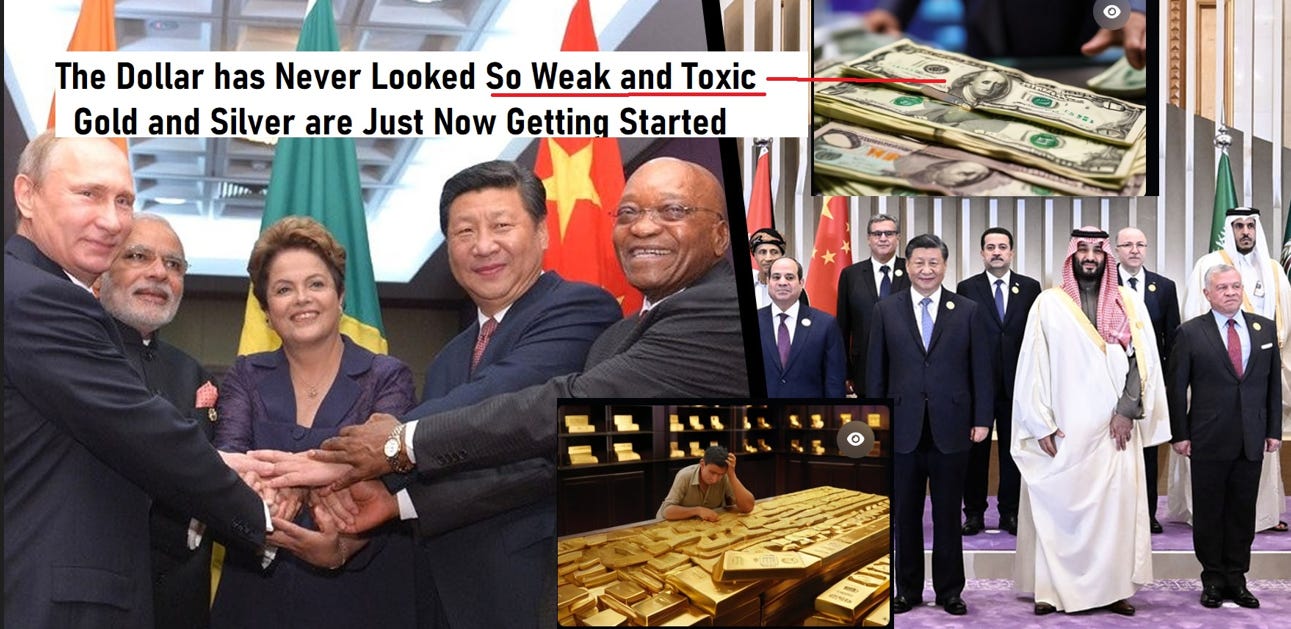A Trade War Won’t Be Good for the Dollar
by Peter Schiff, Euro Pacific Capital:

On Wall Street, it’s best not to think too hard or to look too closely into the mouths of gift horses. Since making predictions based on actual economic understanding is rare, analysts typically look to provide explanations after the fact. Within the financial services industry, currency traders are perhaps the greatest practitioners of this craft. While they often get the fundamentals completely wrong, it never seems to stop them from offering bizarre theories to explain currency movements.
After the Recession of 2001-2002, the dollar began an historic, nearly 40%, decline that bottomed out in early 2008. During that time, the falling dollar became a dominant topic in the financial world. While it was occurring, I argued that the sell-off was the result of the overly accommodating monetary policies of the Alan Greenspan-led Federal Reserve and the rapid increase of Federal debt under George W. Bush. Few currency traders agreed. Instead, most continually predicted that the slide would end long before it actually did. Their confidence may have been based on the fact that the Federal Reserve raised rates from 2003 to 2007. According to the textbooks, rising rates, which reward someone for holding a particular currency, are supposed to be a positive. Except, that time, they weren’t. I argued that the rate increases were too mild to actually strengthen the dollar and too slow to deflate the growing bubbles in stocks and real estate. Eventually the dollar decline stopped, but it took the chaos of the 2008 financial crisis to bring it about.
After two and a half years of intense volatility that followed the aftermath of that crisis, the dollar settled into a long uptrend that began in April 2011 that has since added more than 30% to its value. When the rally started, traders attributed it to the first hints that the Fed would be winding down its Quantitative Easing bond buying program (which had been in effect since 2008). Even though those purchases didn’t fully end until 2015, just the thought that the program would be slowing inspired traders to buy the dollar. When QE came to an end, their anticipation then shifted to the Fed’s decision to lift interest rates from zero, a move that finally occurred in December 2015. Since then, they have attributed the rally to the rate hikes of 2017 and 2018 and the future hikes the Fed has said it intends to deliver this year and next.
But during the entire rally, interest rates have remained below even the official rate of inflation, and America’s trade and budget deficits have kept expanding. Those factors should have dragged the dollar down. Instead, political troubles in the European Union and economic uncertainty in Asia, combined with massive central bank purchases of Treasury bonds, helped push up the dollar for unearned reasons. But as long as the trends conformed to their forecasts, no one questioned the causality.
When 2017 began, bullish consensus on the dollar was off the charts. Yet despite multiple rate hikes throughout the year, the dollar defied consensus and fell sharply, notching its first annual decline in five years, and it’s largest yearly drop in fourteen. But following its worst January since 1987, the dollar has since risen by about 7% from its February low. To explain the turnaround, traders are now making similarly bad arguments and are extrapolating continued gains into the future. Incredibly, included among their bullish arguments are soaring federal budget deficits and the prospects for a protracted trade war. But they are wrong that those factors will help the dollar.
Traditionally, rising government deficits have always been bearish for the dollar. That’s because it was expected that the government would have to borrow to meet the shortfall. More borrowing leads to more debt issuance, which puts downward pressure on bond prices and the dollar, especially when the Fed increases the supply of dollars to purchase those bonds itself. But this time the markets think it will be different.
While it is well known that deficits are rising dramatically as a result of the recently passed tax cuts and spending increases, traders amazingly assume that the Fed will not need to accommodate the larger deficits with easier money. Instead they believe that the Fed will continue to tighten policy, raising rates through this year and next. They also believe that the Fed will actually tighten further by selling $50 billion per month of its own inventory of Treasury bonds into the market (which the Fed has indicated it will do beginning in October of this year). By flooding the market with an unprecedented supply of treasuries, the thinking is that a dollar shortage will ensue. That is because the global dollar supply will be absorbed by the U.S. government, crowding other borrowers out of the market. The biggest losers are assumed to be emerging markets, where dollar funding plays a significant role in local finance. If you don’t bother to actually think it through, such an idea may make sense. But it evaporates under closer scrutiny.
Since treasuries are merely interest-bearing dollars, as the supply of treasuries soars so does the supply of dollars. As investors loan dollars to the U.S. government, those dollars get spent right back into circulation, allowing the same dollars to purchase even more Treasuries. So the market will never run out of dollars, as the government will constantly spend whatever quantity it borrows back into circulation.
Even if the Fed manages to shrink its $4.5 trillion balance sheet, the Federal Government’s balance sheet will continue to swell. The world will be awash in dollars in one form or another. The Fed issues liabilities in the form of Federal Reserve Notes, which have no maturity and pay no interest. The U.S. government issues liabilities in the form of interest bearing Treasury debt of varying maturities. But the total dollar supply is actually the sum of all government liabilities, whether issued by the Fed or the Treasury. The only caveat is that one needs to believe the Fed would never allow the Treasury to default. My guess is that since the markets regard Treasuries as being risk free, that assumption has clearly been made.



